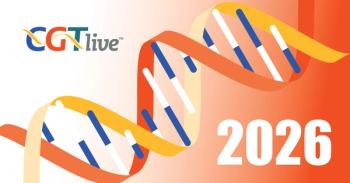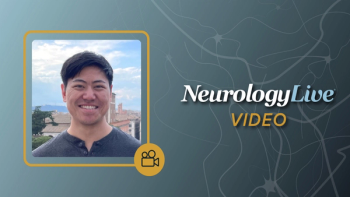
Allogeneic HSCT Significantly Improves EF Survival in Patients With MDS
Patients with MDS treated with alloHSCT and 5-aza had significant improvements in event-free survival compared to 5-aza treatment alone.
This content originally appeared on our sister site,
Allogeneic hematopoietic stem cell transplantation (alloHSCT) significantly improved event-free survival (EFS) in older patients with advanced myelodysplastic syndromes (MDS) compared with continuous 5-azacytidine (5-aza) therapy, according to data from a phase 2 study published in the Journal of Clinical Oncology.
AlloHSCT and 5-aza induction together yielded a 3-year EFS rate of 34% (95% CI, 22%-47%) after allograft versus 0% for 5-aza alone (P < .0001). The OS rates at 3 years were 50% (95% CI, 39%-61%) and 32% (95% CI, 14%-52%), respectively (P = .12).
“In contrast to standard therapy with 5-aza, HSCT has been shown to be curative, also in elderly patients with MDS. But because of the inherent complications, which cause therapy-related morbidity and mortality, only selected patients with MDS undergo this procedure,” wrote investigators of the study.
There were 162 patients eligible to receive 5-aza. After induction treatment, only 67% (n = 108) of patients were eligible for either treatment modality, with 81 patients proceeding to alloHSCT and 27 continuing with 5-aza therapy. There were 33% (n = 54) of patients who had premature study termination during the first 4 cycles of 5-aza, of whom 26 had disease progression, 12 patients died from to infection-related complications, 7 patients had adverse effects, 2 patients withdrew their informed consent, and 7 patients withdrew for physicians’ decisions or other reasons.
Between 5-aza induction and treatment allocation, the remission status was 50%, partial responses (PRs) occurred in 20% and complete response (CRs) in 14%. Investigators found that patients in the continuous 5-aza arm had more PRs or CRs, but they hypothesized it might be biased against alloHSCT.
During the 5-aza induction chemotherapy phase, 12 patients died during pretreatment and 26 patients progressed. When patients were allocated to either arm, there was no treatment-related mortality observed in the 5-aza arm, but the cumulative incidence of treatment-related mortality after 1 year with the HSCT arm was 19% (95% CI, 11%-28%; P = .0065).
There were 26 patients who experienced relapse from progression in the 5-aza induction phase. After allocation, an additional 13.6% of patients experienced relapse in the alloHSCT arm whereas all 27 patients in the continuous 5-aza arm relapsed or progressed during follow-up. Of these 27 patients, 14 underwent salvage alloHSCT with alternative human leukocyte antigen–mismatched donors.
By multivariate analysis for EFS, only alloHSCT was a significant factor for EFS (HR, 0.52; 95% CI, 0.28-0.94; P = .03). As a time-dependent covariate, alloHSCT by Cox regression modeling for EFS had a hazard ratio of 0.52 (95% CI, 0.27-0.77; P = .009).
Of the patients in the continuous 5-aza arm who received HSCT after progression and were censored at the time of transplant (n = 14), the 3-year OS rate was 50% compared with the 33% (P = .5).
In the full-set analysis for OS at 3 years, in which 14 patients receiving 5-aza and additional alloHSCT were assigned to the alloHSCT arm and 2 patients assigned to the HSCT arm denied treatment, the difference in OS at 3.31 years was 0.20 (95% CI, –0.11 to 0.50). The estimated OS rate at 3.31 years for the 5-aza arm was 29% (95% CI, 60%-57%) and in the HSCT arm it was 49% (95% CI, 38-59) with a significance of (P = .3).
The multivariate analysis for OS in HSCT versus 5-aza resulted in an HR of 0.9 (95% CI, 0.49-1.73; P = .8). This did not include variables such as sex, ECOG performance status, International Prostatism Symptom Score, recipients age, or remission status, and did not affect OS.
“The study confirmed that elderly patients up to age 70 years with higher-risk MDS and sufficient organ function do benefit from HSCT in comparison with 5-aza treatment,” concluded the investigators of the study.
Reference
Kröger N, Sockel K, Wolschke C, et al. Comparison between 5-azacytidine treatment and allogeneic stem-cell transplantation in elderly patients with advanced MDS according to donor availability (VidazaAllo Study). J Clin Oncol. Published Online July 20, 2021. doi:10.1200/JCO.20.02724
Newsletter
Stay at the forefront of cutting-edge science with CGT—your direct line to expert insights, breakthrough data, and real-time coverage of the latest advancements in cell and gene therapy.






























